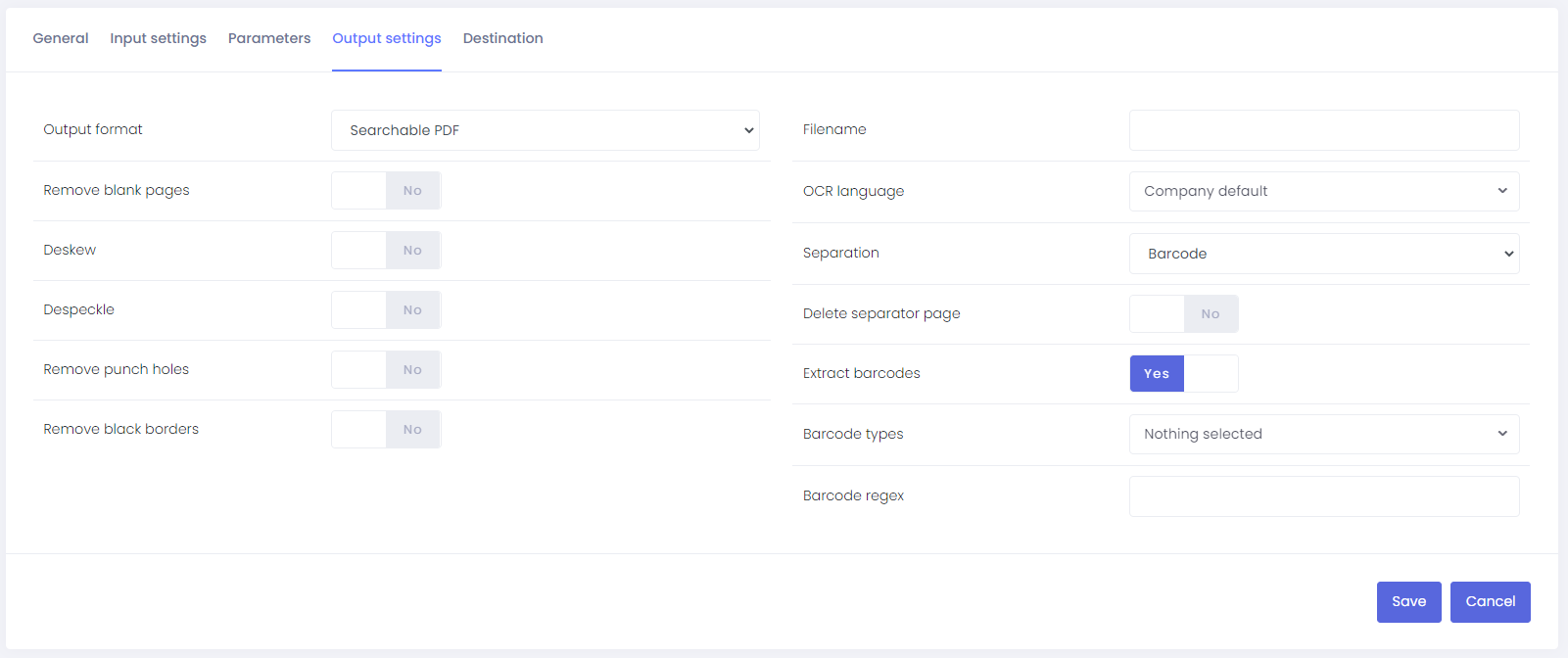OptimiDoc OCR
This section explains into details possibilities of OptimiDoc OCR.

- Output format
- Non-searchable PDF
- Searchable PDF
- Multipage TIFF
- Plain text
- Microsoft Word
- Remove blank pages
- No - all pages will be included in document
- Yes - OCR engine will be used for blank page removal
- Deskew - automated image deskewing is an essential document imaging function which is applied to scanned documents requiring compensation for image skew. It does not require leading edge borders or lines.
- Despeckle - when scanning poorer quality documents, you may get noisy images with lots of dot speckles on them. These speckles, when they appear close to letters or numbers, may affect the quality of OCR. This feature removes such noise.
- Remove punch holes - OCR engine will detect the hole leaving black dot over places where the punch hole is and will remove it from the final document.
- Remove black borders - if yes, OCR engine automatically recognizes black borders of the document and removes them.
- Filename
- OCR language (list of supported languages). It is recommended to select just language of the scanned document for better result and speed of recognition.
- Separation
- None
- Barcode - scanned documents will be separated to multiple documents by barcodes. Barcode represents first page of the new document.
- Delete separator page - if yes, page with barcode will be removed
- Page count
- Page count - specify number of pages, eg. 2 means each 3rd page the new document will start therefore each output file will have 2 pages
- Blank page - scanned documents will be separated by a blank page.
- Delete separator page - if yes, blank page will be removed
- Extract barcodes
- Barcode types (list of supported barcode types)
- Barcode regex - use the regular expression to match barcode with specific pattern
System parameter [barcode]
One can simply use [barcode] or advanced [barcode:<selector>] where <selector> stands for these options: all, current, next, first, last or the number (index starting from 0).
So for example [barcode:0] is the first barcode we found (same as [barcode:first]) and [barcode:-1] is the last barcode and is the same as [barcode:last].
There is a possibility to specify separating character for the <selector>, for example [barcode:all:separator=-], the default is comma [barcode:all:separator=,].